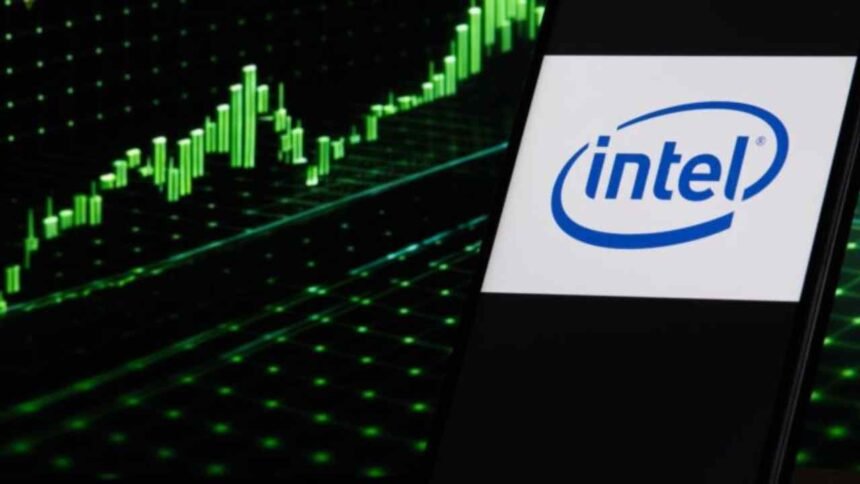SoftBank equity investment in Intel
SoftBank equity investment in Intel arrives at a pivotal moment for chipmaker Intel’s survival. This strategic yet compassionate infusion of $2 billion is seen not just as fresh capital but as a vote of confidence in the company’s potential to reclaim its former semiconductor glory.
Intel, once a powerhouse of microprocessors and memory chips, has faced a brutal slump. Missteps in management, repeated delays in cutting-edge chip production, and an inability to capitalize on the AI boom put the firm on the back foot. Meanwhile, rivals like AMD, Nvidia, and Taiwan Semiconductor Manufacturing Co. surged ahead. In 2024, Intel posted a staggering net loss of $18.8 billion, its largest ever.
A Strategic Rescue, Not a Bailout
SoftBank’s investment at $23 per share, slightly below Intel’s closing price will net roughly a just-under-2% stake, placing it among Intel’s ten largest shareholders. The deal notably carries no strings, no board seats, no chip supply deal, just cold, hard equity.
That lack of board control underscores SoftBank’s stance: this is a financial bet, not a take-over. It signals faith in Intel’s leadership and future potential, rather than a demand for immediate influence. CEO Lip-Bu Tan praised the move, saying SoftBank “shares our commitment to advancing U.S. technology and manufacturing leadership”. Hormohit Son echoed that semiconductors are foundational to modern industries and strongly endorsed Intel’s role in U.S. chipmaking .
Market Reaction & Broader Implications
The response was swift. Intel shares surged by 5–6% in after-hours trading, reversing earlier declines tied to speculation about a possible U.S. government stake. SoftBank’s own stock, surprisingly, fell more than 5%, suggesting investors may have viewed the equity purchase as overexposure or a risky bet on a turnaround.
This injection also arrives amidst ongoing discussions between Intel and the U.S. government regarding a potential 10% governmental stake possibly by converting funds earmarked under the CHIPS and Science Act into equity. That approach, backed by Commerce Secretary Howard Lutnick, aims to protect taxpayer interests while bolstering domestic semiconductor capacity.
Why This Matters Now
Intel’s struggles have real-world consequences. The company’s delayed foundry expansions, particularly its long-awaited Ohio facility, have frustrated lawmakers and added political scrutiny. At the same time, the geopolitical imperative to fortify U.S. semiconductor manufacturing amid rising global competition cannot be overstated.
A private sector backer like SoftBank provides cash and a degree of legitimacy and optimism. It helps Intel weather near-term financial stress and offers breathing room to focus on reviving its technological edge especially in AI chips and foundry services.
Structural Challenges Ahead
Despite this windfall, several hurdles remain:
- AI chip competitiveness: Intel still lags behind AMD and Nvidia. It must secure major customers to reestablish credibility .
- Foundry doubts: Clients remain wary of Intel’s delayed manufacturing timelines and cost structure.
- Leadership scrutiny: CEO Lip-Bu Tan remains under pressure for performance, and amid political tension surrounding his past and perceived ties.
A Moment of Renewal or Pressure?
For Intel, the SoftBank equity investment in Intel represents rare room to mobilize. It’s a powerful signal of belief in a turnaround, at a time when the company desperately needs financial support and external validation. But turning this lifeline into sustainable revival demands tangible results and swift ones.
If Intel can leverage this capital to accelerate AI chip production, attract foundry partners, and deliver financial improvement, SoftBank’s timing could be viewed as visionary. If not, it may simply extend the struggle.
A Defining Moment for Intel
SoftBank equity investment in Intel offers hope and demands responsibility. The chip giant now needs to deliver real-world achievements improved products, visible turnaround, and renewed competitiveness in both design and manufacturing. With U.S. policymakers watching and private markets having placed their bets, the task is clear.
This isn’t just another funding round. It’s a wake-up call with teeth. And the clock is ticking.






